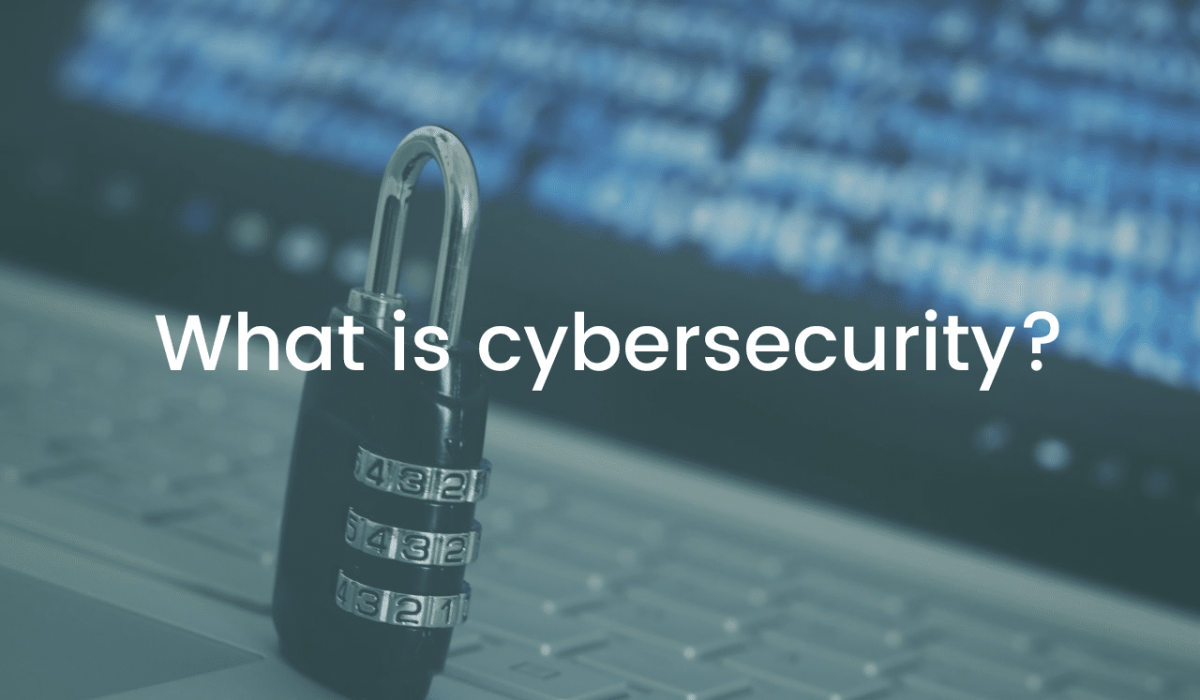What is Cybersecurity? A Complete Guide to Protecting Your Digital World
In today’s interconnected world, where businesses rely heavily on technology and data, cybersecurity is no longer optional—it’s essential. Every day, individuals and organizations face increasing digital threats, from phishing scams to ransomware attacks. But what exactly is cybersecurity, and how can it safeguard your information?
This blog article will explore cybersecurity fundamentals, why they matter, the different types of cyber threats, and the best prevention methods. Whether you’re an individual trying to protect your data or a business looking to secure your digital infrastructure, this guide will equip you with the knowledge to stay safe online.
What is Cybersecurity?
Cybersecurity refers to protecting systems, networks, programs, and data from digital attacks. These attacks are often aimed at accessing, changing, or destroying sensitive information, interrupting normal business processes, or extorting money from users or organizations.
At its core, cybersecurity is about creating a secure environment for digital assets. It involves multiple layers of protection that work across computers, networks, mobile devices, and software applications to defend against unauthorized access and malicious threats.
Why is Cybersecurity Important?
In an era where data is one of the most valuable assets, a single breach can cost a company millions of dollars—not to mention irreparable damage to its reputation.
Here are just a few reasons why cybersecurity is critical:
- Protection of sensitive information: Customer data, financial records, trade secrets, and personal information must remain secure to maintain trust and comply with legal requirements.
- Business continuity: A cyberattack can disrupt operations, halt productivity, and even bring an entire business to a standstill.
- Compliance and regulations: Many industries are required by law to implement cybersecurity measures to protect client and organizational data.
- Reputation management: Consumers and clients are likelier to trust a company that demonstrates a strong commitment to digital security.
Types of Cybersecurity Protection Methods
There isn’t a one-size-fits-all solution to cybersecurity. Instead, multiple tools and strategies work together to create a comprehensive security system. Below are some of the most common cybersecurity prevention methods that organizations and individuals use.
1. Network Security
Network security involves protecting the integrity and usability of your network and data. This includes technologies and policies designed to prevent unauthorized access, misuse, or theft.
Key tools include:
- Firewalls
- Intrusion detection systems (IDS)
- Intrusion prevention systems (IPS)
- Secure Wi-Fi and VPNs
Network security serves as the first line of defense against external threats by monitoring traffic and blocking suspicious activity.
2. Data Loss Prevention (DLP)
DLP strategies help organizations ensure that sensitive data does not leave the corporate network without authorization. This involves:
- Monitoring user activity
- Classifying data based on sensitivity
- Enforcing policies to prevent data breaches
DLP is especially crucial for industries that handle regulated data like healthcare (HIPAA) or finance (PCI-DSS).
3. Cloud Security
With the rise of cloud computing, data is no longer stored only on local servers. Cloud security involves protecting the data, applications, and infrastructures hosted in cloud environments.
Best practices include:
- Using strong encryption
- Implementing robust identity and access controls
- Regular security audits
- Leveraging secure cloud providers
4. Antivirus and Anti-malware Software
Antivirus software is designed to detect, prevent, and remove malware. Modern antivirus tools go beyond just scanning for known threats—they use behavioral analysis to detect suspicious activity that might indicate a new or unknown virus.
Many antivirus tools now include:
- Real-time threat detection
- Email and web protection
- Ransomware protection
- Sandboxing (isolated environments to test files)
5. Identity and Access Management (IAM)
IAM systems help control who can access your company’s information systems. They ensure that only authorized individuals can access specific resources at the right times and for the right reasons.
Common IAM technologies include:
- Password managers
- Multi-factor authentication (MFA)
- Biometric identification (fingerprint, facial recognition)
- Role-based access control
This significantly reduces the chances of unauthorized access—whether from external hackers or internal threats.
Common Types of Cyber Threats
Understanding potential threats is the first step in building an effective defense strategy. Here are some of the most common and dangerous cyber threats facing individuals and businesses today.
1. Phishing Attacks
Phishing is one of the oldest and most widespread cyber threats. It typically involves deceptive emails or messages that appear to come from legitimate sources like banks, coworkers, or online services.
Victims are tricked into clicking malicious links or providing personal information such as:
- Login credentials
- Social Security numbers
- Credit card details
2. Ransomware
Ransomware is a type of malware that encrypts a victim’s files and demands payment in exchange for a decryption key. It’s especially damaging to businesses, government agencies, and healthcare providers.
Even if the ransom is paid, there’s no guarantee that the files will be restored. Prevention is key through:
- Regular backups
- Employee training
- Endpoint protection software
3. Malware
Short for “malicious software,” malware includes viruses, worms, trojans, spyware, and more. These programs are designed to:
- Damage or disable computers
- Steal data
- Gain unauthorized access to systems
Malware can spread through infected downloads, email attachments, or even USB drives.
4. Social Engineering
Social engineering involves manipulating people into giving up confidential information. Rather than targeting software vulnerabilities, it targets human psychology.
Examples include:
- Pretexting (creating a false sense of trust)
- Baiting (leaving infected USBs for someone to plug in)
- Tailgating (physically following someone into a secure area)
Often, social engineering is used in combination with other cyber threats like phishing or malware.
|
More articles you might like: |
Tips for Staying Safe Online
Now that you know the threats and defenses, here are some practical tips to improve your cybersecurity hygiene:
- Use strong, unique passwords for every account. Consider using a password manager.
- Enable multi-factor authentication (MFA) wherever possible.
- Keep software and systems updated to patch known vulnerabilities.
- Avoid clicking suspicious links or downloading files from unknown sources.
- Back up your data regularly and store backups offline or in secure cloud services.
- Train your employees or family members to recognize cyber threats and avoid common pitfalls.
- Use encrypted connections (HTTPS, VPNs) when browsing or accessing sensitive data remotely.
Cybersecurity for Businesses: Best Practices
For businesses, a few extra steps are essential:
- Conduct regular security assessments and penetration tests
- Implement a cybersecurity policy that all employees must follow
- Segment your network so that a breach in one area doesn’t compromise the entire system
- Use endpoint detection and response (EDR) solutions
- Partner with cybersecurity experts or managed service providers for ongoing monitoring
The Future of Cybersecurity
As technology evolves, so do cyber threats. In the coming years, cybersecurity will become increasingly reliant on AI and machine learning to predict and respond to threats in real-time. Zero-trust architecture, which assumes no device or user is automatically trustworthy, is also gaining traction.
Cybersecurity is not just an IT concern—it’s a business-critical function that demands attention from every department, from HR to finance to leadership.
Final Thoughts
Cybersecurity may seem complex, but its goal is simple: to protect your digital life. Whether you’re safeguarding personal photos or corporate secrets, a strong cybersecurity strategy is your best defense against a growing landscape of threats.
By understanding the risks and adopting proactive measures, you can stay one step ahead of cybercriminals and ensure your data remains safe, your systems stay operational, and your reputation stays intact.

